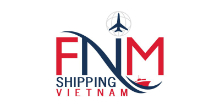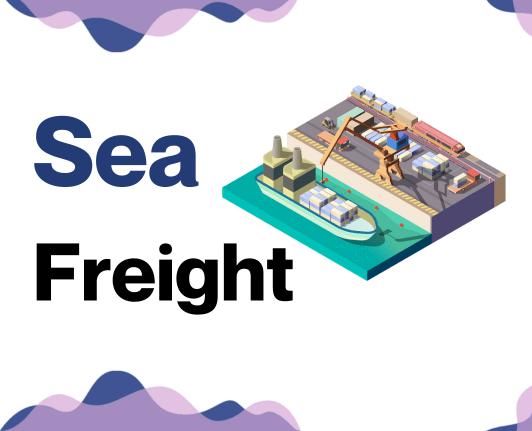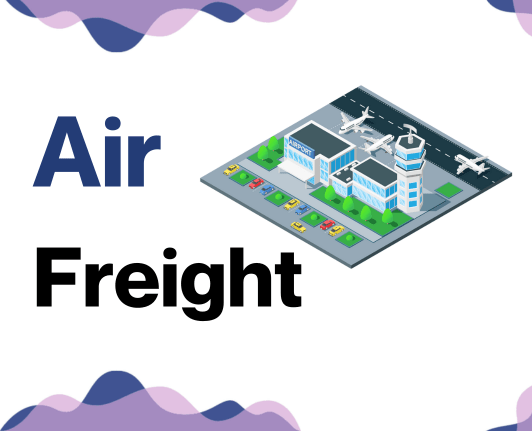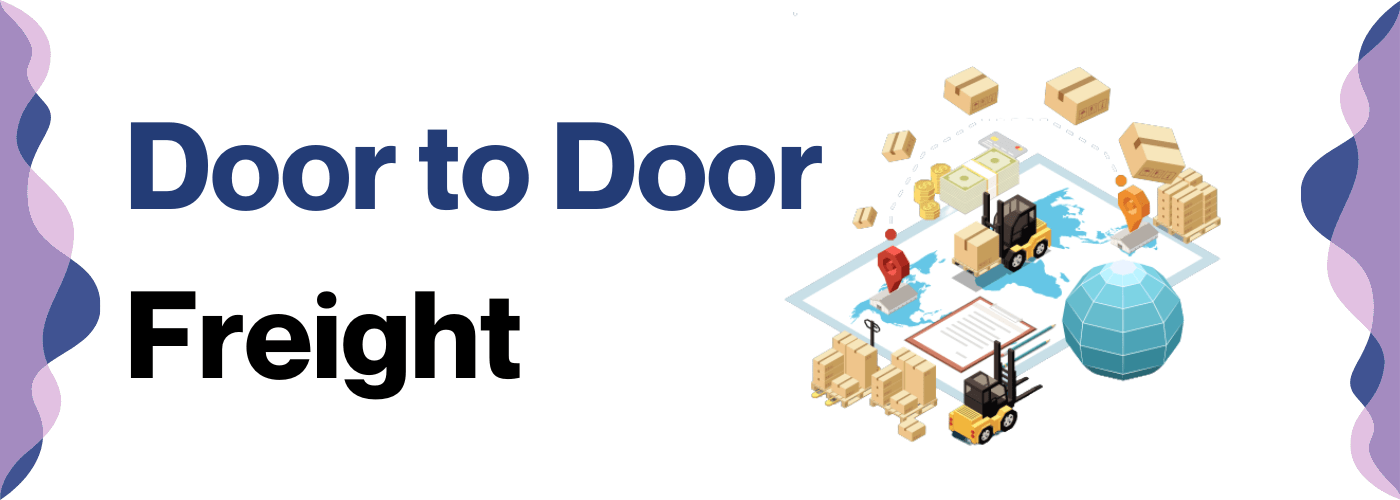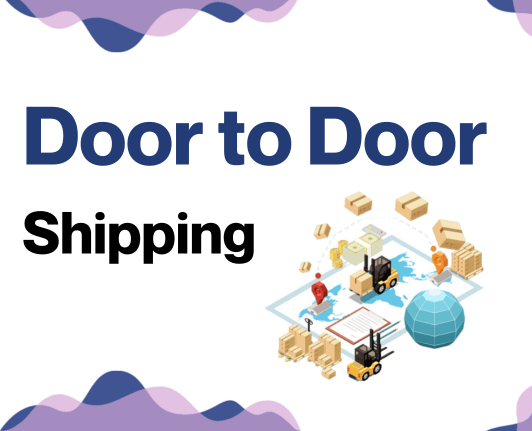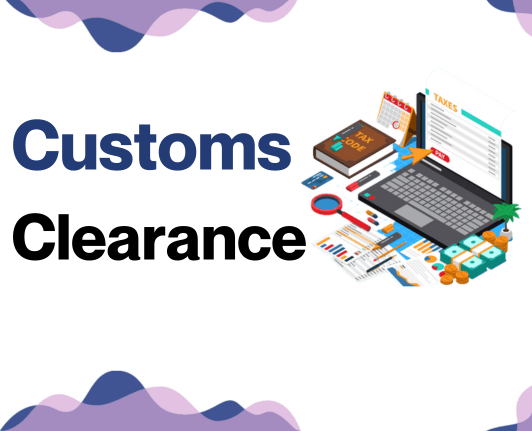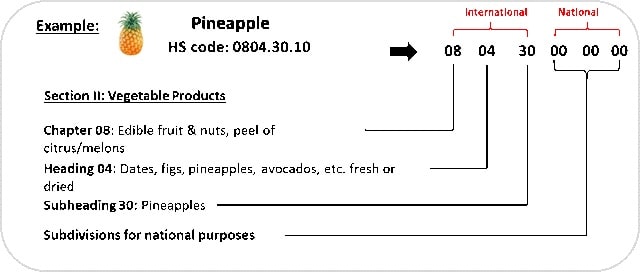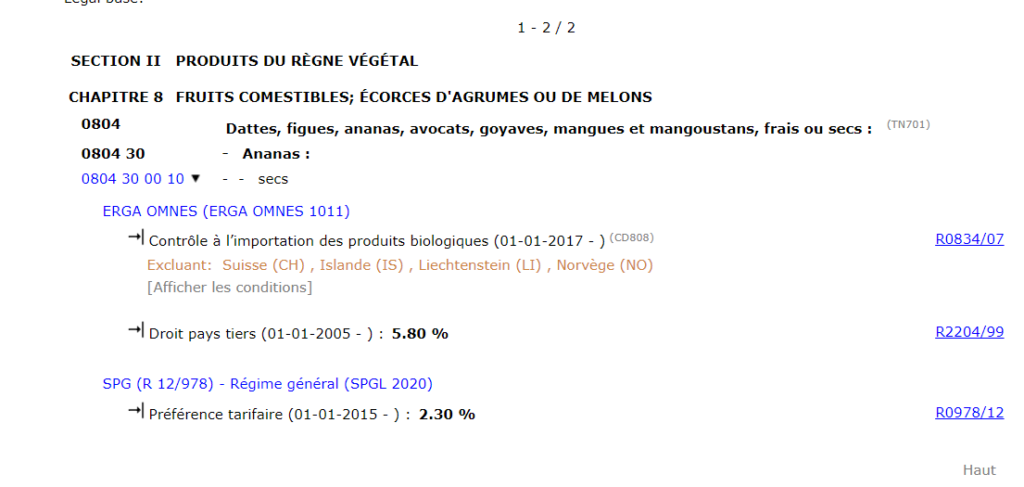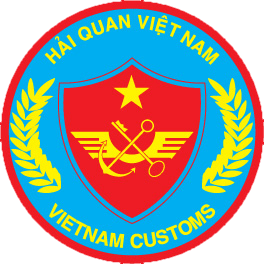Ever tried to shuffle a deck of cards from Vietnam to Turkey? Not easy, right? It's a similar story when it comes to planning an international freight operation, with tasks like understanding variable transit times, rates, complex customs regulations and more all complicating the process. This guide comes to your rescue, offering in-depth insights on the ins and outs of shipping goods between the two countries. Unravel the intricacies of air, sea, road, and rail freight options, along with essential information on customs clearance, duties, and taxes. You'll also find bespoke advice tailored for businesses to optimally manage their shipping operations. If the process still feels overwhelming, let FNM Vietnam handle it for you! Their professional team turns these challenges into success by overseeing every detail of your shipping needs, leaving you to focus on what you do best - growing your business.
Which are the different modes of transportation between Vietnam and Turkey?
Choosing the right transportation for shipping between Vietnam and Turkey feels like picking the quickest path in a maze. Imagine, it's a route that spans over 7,000 miles, peppered with numerous countries in between - a chessboard of sorts. While road and rail seem handy, they're much like the long zig-zag lines in your childhood mazes - trickier due to numerous customs points. Air freight? Think of it as a helpful springboard, but it can make your wallet lighter. On the other hand, ocean freight, though slow-moving like a turtle, may prove a wallet-friendly hare in this race, particularly for bulk shipments.
How can FNM Vietnam help?
Frustrated with shipping goods between Vietnam and Turkey? FNM Vietnam is your go-to partner, simplifying the process, minimizing costs, and tackling customs. All you have to worry about is running your business, we'll handle the rest. Seeking immediate assistance? Reach out to our consultants for free, or ask for a cost estimate within the next 24 hours!
FNM Vietnam Tip: Sea freight might be the best solution for you if:
- You're moving big loads or large items. Sea freight offers roomy, cost-effective solutions.
- Your shipment isn't time-critical. Ocean routes take longer but are often more reliable.
- Your supply chain links major ports, tapping into a broad network of sea lanes.
Sea freight between Vietnam and Turkey
Satisfying the appetite of trade between Vietnam and Turkey is an orchestra of cargo vessels, plying the ocean, trading high volumes of goods. Think sea freight shipping as the long-distance marathon runner, steady and cost-effective, despite not being the swiftest of competitors. The chief conductors of this symphony are the key ports like Cai Mep in Vietnam and Asyaport in Turkey, gateways to bustling industrial centers.
But it's not all smooth sailing. The seasoned shipper knows that this shipping route dances with complexities. Missteps aren't merely stumbles – they're tripped alarms, missed deadlines, and potentially, a hit to your bottom line. It's akin to that time you assembled a flat-pack furniture - a maze of instructions, each step critical yet complex. In the chapters ahead, lies the simple, step-by-step instructions to decode this shipping conundrum. Let's usher in a breeze to set your business sailing smoothly across these international waters. The roadmap to best practices and nifty nuances in ocean shipping between Vietnam and Turkey awaits discovery.
Main shipping ports in Vietnam
Port of Hai Phong
Location and Volume: Situated in the northeastern part of Vietnam, the Port of Hai Phong occupies a key role in the country's marine transportation, handling over 100 million tons of cargo annually.
Key Trading Partners and Strategic Importance: This port shares robust connections with many Asian, European, and American countries, including China, Japan, South Korea, and the USA. It's strategically important as it provides crucial access to the economic center of Hanoi.
Context for Businesses: If you aim to reach local and regional markets around the North of Vietnam, the Port of Hai Phong, due to its proximity and the volume it handles, can be a pivotal part of your logistics chain.
Location and Volume: Located in the city of Da Nang in Central Vietnam, this seaport handles over 8 million tons of cargo each year.
Key Trading Partners and Strategic Importance: Its key trading partners are primarily located in Asia, such as Japan, Taiwan, South Korea, and Singapore, but it also has connections with Australia and Europe. It plays a significant role in the import and export activities for Central and Central Highlands provinces.
Context for Businesses: If you're considering expanding your distribution to Central Vietnam or the Central Highlands, the Port of Da Nang, with its excellent location, should be high on your list of potential shipping options.
Port of Ho Chi Minh City
Location and Volume: Nestled in South Vietnam, the Port of Ho Chi Minh City handles the bulk of the country's international maritime trade, handling approximately 6 million TEUs per year.
Key Trading Partners and Strategic Importance: This port maintains strong shipping connections with key global players, including China, the U.S., Japan, and Australia. It's also the busiest commercial port in Vietnam.
Context for Businesses: If your business strategy involves penetrating southern Vietnamese markets or accessing the robust ASEAN region, then the Ho Chi Minh City port, given its broad international links and high volume, should be a critical component of your shipping plans.
Port of Quy Nhon
Location and Volume: Located in the city of Quy Nhon, the Port of Quy Nhon deals with over 8 million tons of freight annually.
Key Trading Partners and Strategic Importance: Regional countries such as Singapore, Malaysia, and Thailand rank among its key trading partners. The port serves the south central coast and the Central Highlands.
Context for Businesses: For businesses eyeing the south central coast and Central Highlands, the Port of Quy Nhon is ideally located and equipped to potentially support and accelerate your expansion strategies.
Port of Cam Ranh
Location and Volume: The Port of Cam Ranh can be found on the southeast coast of Vietnam, handling a volume of over 5 million tons annually.
Key Trading Partners and Strategic Importance: This port's major trading partners are largely regional, concentrating on countries such as China, South Korea, and Japan. This port is crucial for facilitating imports and exports in the Khanh Hoa province.
Context for Businesses: If your business plans center around growth in the southeast region of Vietnam or the broader Indochinese area, the Port of Cam Ranh could be a valuable link in your supply chain due to its geographical importance and regional connections.
Port of Vung Tau
Location and Volume: The Port of Vung Tau, located in Southeast Vietnam, moves around 38 million tons of cargo every year.
Key Trading Partners and Strategic Importance: It maintains vigorous trade relations with numerous Asian countries, particularly China and Japan, as well as the United States. It plays an important role in facilitating maritime trade in the oil and gas sectors.
Context for Businesses: If your business involves energy commodities, the proximity of the Vung Tau Port to Vietnam's oil fields can offer strategic advantages, resulting in potential cost savings and enhanced efficiency in your logistics plan.
Main shipping ports in Turkey
Port of Ambarli, Turkey
Location and Volume: Located near Istanbul in the Marmara region, the port of Ambarli is one of the most important commercial hubs for Turkey, handling nearly 50% of Turkey's total container freight with a shipping volume of around 1.6 million TEU per year.
Key Trading Partners and Strategic Importance: The port is strategically important in maintaining Turkey’s trade with countries around the Mediterranean and North Europe. Key partners include Italy, Germany, Spain and France.
Context for Businesses: If you're planning on tapping into the European or Mediterranean markets, the Port of Ambarli's robust handling facilities and frequent connections to these regions could prove highly beneficial.
Port of Mersin
Location and Volume: The Port of Mersin is situated on the Mediterranean coast, in south-eastern Turkey. This port handles the largest volume of goods in Turkey outside of Istanbul, with a volume of approximately 1.9 million TEU annually.
Key Trading Partners and Strategic Importance: Mersin’s strategic position has solidified its trade relationships with Middle Eastern countries, North Africa, and Europe. Prominent trading partners include Egypt, Saudi Arabia, and Russia.
Context for Businesses: Considering expanding your reach into the Middle East or North African Markets? The Port of Mersin’s strategic location and high volume of regional traffic make it your go-to choice.
Port of Izmit
Location and Volume: The Port of Izmit is located on the eastern coast of the Sea of Marmara, handling nearly 400,000 TEU per year.
Key Trading Partners and Strategic Importance: The port primarily serves the extensive industrial zone surrounding Izmit and Istanbul, thus playing a crucial role in Turkey’s domestic manufacturing output.
Context for Businesses: If your business is industrially oriented, particularly automotive or chemical, the Port of Izmit could prove essential to your logistics given its services focus and proximity to industrial zones.
Port of Haydarpasa
Location and Volume: In Istanbul on the northern shore of the Sea of Marmara, the port of Haydarpasa handles approximately 1 million TEU annually.
Key Trading Partners and Strategic Importance: Serving mainly domestic markets, it also facilitates Turkey’s trade with European and Black Sea countries.
Context for Businesses: The Port of Haydarpasa connects Turkey's Asian side to Europe, making it invaluable for businesses that require a direct route between these regions.
Port of Iskenderum
Location and Volume: Located on the eastern Mediterranean coast, the port of Iskenderum is a key logistics point for Turkey, processing approximately 500,000 TEU every year.
Key Trading Partners and Strategic Importance: Its location facilitates trading relationships with countries around the Mediterranean Sea, Middle East, and North Africa.
Context for Businesses: If your business envisages to expand towards Middle Eastern or North African markets, the Port of Iskenderum may be an essential part of your logistics given its strategic location and efficient handling facilities.
Port of Antalya
Location and Volume: Located on Turkey's southern coast, the Port of Antalya, albeit smaller in volume, plays a key role in servicing Turkey's tourist-heavy regions, handling approximately 100,000 TEU annually.
Key Trading Partners and Strategic Importance: Its major trading partners are countries around the Mediterranean Sea like Greece, Spain, and Italy.
Context for Businesses: If you're in the tourism or leisure industry, the Port of Antalya's connections to popular tourist destinations and Mediterranean routes could make it a pivotal aspect of your logistical plan.
Should I choose FCL or LCL when shipping between Vietnam and Turkey?
Choosing between Full Container Load (FCL) and Less-than Container Load (LCL), also known as consolidation, isn't just a toss-up — it's a game-changer in your Vietnam-Turkey shipping journey. The right call can optimize costs, delivery times, and your enterprise's overall success. This section will equip you with the nitty-gritty of both options, enabling you to make an informed, strategic choice tailored to your specific requirements. Hang tight and get ready to master your freight decision-making!
LCL: Less than Container Load
Definition: LCL, or Less Container Load, is a mode of shipment where your cargo shares space with multiple shippers' goods in a single container.
When to Use: This option is most advantageous for low volume shipments, specifically when your cargo is less than 15 Cubic Meters (CBM). Its flexibly accommodates fluctuations in freight volume, thereby making it a go-to option for many businesses.
Example: Consider a small business in Vietnam that makes handmade ceramics. They have an order of 10 CBM to ship to a retailer in Turkey. Rather than rent a whole container, they opt for LCL shipment as it allows them to share the container and associated costs with other shippers.
Cost Implications: The cost of LCL freight is generally calculated per CBM. While the price per CBM is higher than Full Container Load (FCL) shipping, smaller cargo load like in our example, turns the overall expense to be less than that of a full container. Therefore, LCL offers a balance between cost, flexibility, and the volume of goods transported.
FCL: Full Container Load
Definition: FCL (Full Container Load) shipping is a type of ocean freight transport where an entire container is exclusively used for a single consignment. It's a preferred method for transporting large volumes of goods, making use of standardized 20'ft and 40'ft containers.
When to Use: FCL shipping typically becomes cost-effective when shipping more than 13 to 15 cubic meters (CBM) of goods. Additionally, its superior safety features – the container is sealed from origin to destination – make it excellent for valuable or sensitive cargo.
Example: For instance, if a furniture manufacturer in Vietnam needs to ship 18 CBM of high-value handcrafted tables to a retailer in Turkey, FCL would be the optimal choice. Their goods would fit comfortably into a 20'ft FCL container, which would be sealed at the departure port and not opened until it arrives at the Turkish destination.
Cost Implications: While the upfront FCL shipping quote might seem higher, the cost per CBM works out cheaper for large consignments than other shipping methods. The shipping cost essentially becomes a fixed price, irrespective of added volume, making FCL cost-effective for larger shipments. Plus, considering FCL's additional safety with a sealed container, the perceived value is often higher.
Say goodbye to shipping headaches!
Embarking on a shipping journey between Vietnam and Turkey? Let FNM Vietnam, a proficient freight forwarder, ease your voyage. Our dedicated experts in ocean freight help you decode whether consolidation or full container transportation best suits your business needs, evaluating elements such as cost, shipment size, and delivery speed. Optimize your transportation strategy and avoid logistical hiccups with FNM Vietnam. Request a free estimation today and make your cross-border shipping process as smooth as sailing!
How long does sea freight take between Vietnam and Turkey?
Sea freight between Vietnam and Turkey typically takes about 40 days. The actual transit time is subject to a range of factors, such as the specific ports of pick-up and delivery, the weight, and nature of your goods. To get an accurate estimate tailored for your shipment, reaching out to a freight forwarding expert like FNM Vietnam is always beneficial.
The table below provides an idea of average transit times between key freight ports in both countries:
| Vietnam Ports | Turkey Ports | Average Shipping Time (Days) |
| Ho Chi Minh City | Istanbul | 19-25 |
| Hai Phong | Mersin | 62 |
| Da Nang | Izmir | 50 |
| Quy Nhon | Bursa | 35 |
*Please note, these are average times and actual may vary based on various factors.
How much does it cost to ship a container between Vietnam and Turkey?
Imagine you're exporting goods from the vibrant markets of Vietnam to the historic bazaars of Turkey, and you're trying to gauge the shipping cost. Rice wine or silk lanterns, Hanoi or Istanbul, each detail molds your unique shipment, causing ocean freight rates per CBM to fluctuate broadly. This complexity, intertwined with carrier choices and monthly market shifts, makes pinpointing a universal price a maze. But don't fret! Our ace shipping specialists are at your disposal. Launching a one-on-one consultation process, they'll stitch together a personalized quote that optimizes your operation and simplifies your supply-chain journey.
Special transportation services
Out of Gauge (OOG) Container
Definition: An OOG container is designed to accommodate large or awkwardly shaped items that won't fit into standard containers. They're ideal for transporting out of gauge cargo, which exceeds the dimensions of a standard container.
Suitable for: OOG containers are specifically designed for oversized items, heavy machinery, large equipment, and non-stackable goods.
Examples: The types of goods you could ship with an OOG container could include massive construction machinery, turbines, or large-scale artwork from Vietnam to Turkey.
Why it might be the best choice for you: If your business frequently deals with large or unusually shaped goods, then an OOG container can provide a secure and efficient shipping solution.
Break Bulk
Definition: Break bulk refers to goods shipped individually or in units, rather than in a container. They're transported straight into the ship's hold and are separated or broken up into smaller lots at the destination.
Suitable for: Break bulk is an excellent solution for items too large or heavy to fit in containers, such as steel beams or machinery parts.
Examples: If you're exporting prefabricated housing supplies from Vietnam or bulky machinery to Turkey, break bulk is an option to consider.
Why it might be the best choice for you: Choosing a break bulk method offers more flexibility in handling since items aren't confined to a specific container size or shape.
Dry Bulk
Definition: Dry bulk involves the transportation of loose cargo load, such as grains or coal, stowed directly in the hold of a vessel.
Suitable for: Dry bulk is perfect for shipping unprocessed materials in large quantities, like coal, cement, or different types of grains.
Examples: If you're in the rice export business in Vietnam and plan to deliver massive amounts to Turkey, dry bulk is an optimal choice.
Why it might be the best choice for you: Using the dry bulk method can lower your shipping costs, especially when transporting large quantities of goods.
Roll-on/Roll-off (Ro-Ro)
Definition: Roll-on/Roll-off (often abbreviated as RoRo) shipping involves vehicles rolling onto a ro-ro vessel at the point of load and rolling off at the destination. The cargo stays on the wheels during the entire journey.
Suitable for: Ro-ro shipping is ideal for transporting wheeled cargo, such as cars, trucks, trailers, tractors, or any type of heavy machinery that can roll onto the vessel.
Examples: If you're shipping assembled vehicles or machinery from Vietnam to Turkey, ro-ro shipping is your best bet.
Why it might be the best choice for you: If your freight has wheels and can be driven onto the vessel, choosing Ro-Ro will ensure your cargo's secure shipping.
Reefer Containers
Definition: Reefer containers are refrigerated containers used to ship temperature-sensitive goods. They help maintain a specific temperature, keeping your freight in a steady, desired condition throughout the journey.
Suitable for: If you're shipping perishable products such as fruits, vegetables, meat, or dairy products, reefer containers are your best bet.
Examples: Vietnam's seafood or Turkey's dairy products are ideal examples of cargo suitable for reefer containers.
Why it might be the best choice for you: Ensuring your perishable goods reach their market in the best condition is critical; reefer containers can provide the temperature management needed for a successful shipment.
Remember, each shipping method has its unique characteristics and benefits, and your choice should be guided by the nature of your goods and your specific shipping needs. At FNM Vietnam, we can help analyze your unique needs and find the best shipping solution for you. For a free shipping quote in less than 24 hours, simply get in touch!
FNM Vietnam Tip: Air freight might be the best solution for you if:
- You're on a tight schedule. Air freight delivers speed unmatched by other modes.
- Your cargo is under 2 CBM, a good fit for air's smaller capacity.
- Your destination is off the usual routes, making air's global network a key asset.
Air freight between Vietnam and Turkey
Air freight between Vietnam and Turkey is swift, reliable, and ideal for shipping small, high-value items. Let's imagine you're sending electronics. The speed and security of air freight ensure your precious cargo lands safely and swiftly, outpacing sea or road freight.
However, navigating the world of air freight isn't as simple as booking a flight. Many shippers mistakenly underestimate costs due to inaccurate weight estimation or unawareness of certain best practices. Perhaps you've calculated the cost using the actual weight of your electronics, not realizing that airlines use 'volumetric weight' - a formula based on size and weight. Unforeseen costs can spring up, significantly raising your expenses, but we're here to help you avoid these pitfalls.
Air Cargo vs Express Air Freight: How should I ship?
Wondering if you should opt for Air Cargo or Express Air Freight while shipping between Vietnam and Turkey? Let's decrypt that jargon – basically, Air Cargo puts your goods on a passenger airline while Express Air Freight gets them their very own dedicated plane. Now, let's dive into their differences, lay out the pros and cons, and see which method aligns best with your unique business requirements.
Should I choose Air Cargo between Vietnam and Turkey?
Air cargo can be an effective choice, particularly for shipments exceeding 100 kg (220 lbs). Despite longer transit times due to fixed schedules, it offers cost-effectiveness and reliability. Notable airlines offering these services include Vietnam Airlines and Turkish Airlines, endowed with comprehensive freight solutions. Remember, selecting the right transportation method is essential, and air cargo might well align with your budget without compromising your shipping needs. A higher budget for faster delivery? Air cargo stands as an attractive option. Lean more on Vietnam Airlines' dedicated cargo site here and Turkish Airlines' freight services here.
Should I choose Express Air Freight between Vietnam and Turkey?
Express air freight, a service designated to dedicated cargo planes without passengers, might be just what you need for your next shipment. If you're transporting less than 1 CBM or 100/150 kg (220/330 lbs) of cargo, consider renowned international couriers like FedEx, UPS, or DHL. These providers offer fast delivery, efficient handling, and comprehensive tracking systems. Leveraging these services can keep you competitive, particularly in industries where speed is critical. Your shipments can reach any corner of the globe, from Vietnam to Turkey, to support your business goals.
Main international airports in Vietnam
Tan Son Nhat International Airport
Cargo Volume: Handling over 1.5 million tons per year, Tan Son Nhat is the busiest airport in Vietnam in terms of cargo load.
Key Trading Partners: Mainly serves the USA, China, and Japan. Other important destinations include Australia, Taiwan, and South Korea.
Strategic Importance: As Vietnam's largest airport, Tan Son Nhat plays a crucial role in the southern economic hub and is the gateway to the economic engine that is Ho Chi Minh City.
Notable Features: The airport operates around the clock and possesses full customs facilities to expedite procedures. Numerous air cargo carriers are available, like FedEx and UPS.
For Your Business: If your business is looking to ship goods to South Vietnam, including Ho Chi Minh City or its surroundings, Tan Son Nhat is the most effective option due to its capacity, connectivity, and strategic position.
Noi Bai International Airport
Cargo Volume: Accommodates up to 1.2 million tons of cargo annually, making it the second most significant in terms of volume in Vietnam.
Key Trading Partners: Primarily serves the USA, China, Japan, South Korea, and European countries.
Strategic Importance: Noi Bai is centrally located in Vietnam, serving as a critical transit point for Northern Vietnam, and Hanoi in particular.
Notable Features: Home to a newly built, state-of-the-art cargo terminal, Noi Bai is well equipped to handle all types of cargo, including temperature-sensitive items.
For Your Business: If your trading partners are situated in North Vietnam, or if you are dealing in perishables, Noi Bai, with its advanced facilities and strategic location, should be your top choice.
Da Nang International Airport
Cargo Volume: Handles roughly 100,000 tons of cargo annually.
Key Trading Partners: Mostly serves regional partners such as China, South Korea, and Japan.
Strategic Importance: Da Nang airport serves the Central region of Vietnam. It's a vital international gateway linking Central Vietnam with international markets.
Notable Features: In addition to its standard handling capabilities, the airport also features a Free Trade Zone nearby, offering multiple business benefits.
For Your Business: If your business deals largely with regional partners or requires the benefits provided by nearby Free Trade Zones, Da Nang should be a consideration in your shipping strategy.
Cam Ranh International Airport
Cargo Volume: Manages around 50,000 tons of cargo annually.
Key Trading Partners: Primarily transports goods to and from countries like China, South Korea, and Russia.
Strategic Importance: Cam Ranh is strategically important in serving the South Central Coast region, a significant tourism and agricultural area of Vietnam.
Notable Features: Next to regular cargo handling, it has facilities to handle fresh agricultural and seafood products.
For Your Business: If you're in the fresh produce sector and your goods require rapid transit times to Asian markets, especially China and South Korea, Cam Ranh may be a viable solution.
Can Tho International Airport
Cargo Volume: Handles over 3,000 tons a year, Can Tho may be smaller but it serves a crucial role in the Mekong Delta.
Key Trading Partners: Significant trading partners include Taiwan, Japan, and South Korea.
Strategic Importance: The airport serves as an important gateway for exporting products from the Mekong Delta, known for agriculture and aquaculture.
Notable Features: Has facilities for cold-storage of fishery and agricultural products.
For Your Business: Ideal for businesses involved in the agriculture and aquaculture sector with trade links in the East Asian market. Can Tho’s agricultural handling capability could be an asset.
Main international airports in Turkey
Atatürk International Airport
Cargo Volume: With a cargo volume of over 2 million tons per year, Atatürk International airport is one of the busiest cargo hubs in Turkey.
Key Trading Partners: It serves as a crucial trading center for partners like Germany, China, the USA, Italy, and the UK.
Strategic Importance: Being conveniently situated between Europe and Asia, it serves as a key gateway for international cargo transit.
Notable Features: The airport has an extensive cargo terminal, providing comprehensive logistics solutions, and is well-equipped to handle a variety of cargo types.
For Your Business: If you're planning to ship high-value and time-sensitive goods, Atatürk International's state-of-the-art cargo terminal and its strategic location might be the perfect fit.
Sabiha Gökçen International Airport
Cargo Volume: Sabiha Gökçen is growing its cargo capacity aggressively, with volume nearing a million tons annually.
Key Trading Partners: It's a significant player in trade with the Middle East and Central Asia, notably Iran and Iraq.
Strategic Importance: Given its location within the rapidly industrializing Marmara region, the airport holds strategic importance in serving the cargo needs of the growing industries.
Notable Features: Sabiha Gökçen boasts dedicated cargo aprons and terminals featuring high-tech security and handling capabilities.
For Your Business: If your business lies within the Marmara region, the extensive cargo facilities and easy access to regional markets might make Sabiha Gökçen an excellent choice.
Ankara Esenboğa Airport
Cargo Volume: While smaller than its Istanbul counterparts, Ankara Esenboğa handles a respectable volume of over 30,000 tons annually.
Key Trading Partners: The airport has strong trade links with European partners, including Germany, France, and the UK.
Strategic Importance: Its central location in Turkey means it serves as a convenient domestic and international hub, particularly for businesses in Ankara.
Notable Features: This airport features a modern cargo terminal with Customs bonded areas for efficient import/export processing.
For Your Business: If your business regularly ships smaller volumes of goods, or operate within the central Anatolia region, Esenboğa's cargo services could align well with your needs.
Izmir Adnan Menderes Airport
Cargo Volume: With a cargo volume of over 100,000 tons annually, this airport is another critical part of Turkey's freight network.
Key Trading Partners: It enjoys solid trading relationships with European countries such as Germany, France, and the UK.
Strategic Importance: Centrally located on the Agean coast, the airport caters to the demands of the flourishing local industries including textile, agriculture, and ceramics, providing crucial connectivity to European markets.
Notable Features: It boasts a modern and well-equipped cargo terminal that offers seamless freight services.
For Your Business: If your business specializes in perishables or textile merchandise, the connectivity and services provided by Izmir Adnan Menderes could directly enhance your supply chain efficiency.
Antalya Airport
Cargo Volume: Antalya Airport handles over 50,000 tons of freight each year, making it a significant component of the country's cargo network.
Key Trading Partners: The airport provides essential connections for trade with Russia, Germany, UK, Ukraine, and Netherlands, dealing primarily in agriculture and textile exports.
Strategic Importance: Located in the Turkish Riviera, it serves the burgeoning tourism and agriculture sectors of the region.
Notable Features: The airport's modern cargo terminal has specialized facilities to handle perishable goods, a valuable feature for the local agri-businesses.
For Your Business: If your business involves perishable goods exports, the specialized facilities and tourist-season capacity of Antalya might offer the ideal shipping solution.
How long does air freight take between Vietnam and Turkey?
The duration to dispatch goods via air freight from Vietnam to Turkey typically ranges between 6 to 9 days. Please note that this timeframe can fluctuate depending on the specifics of your shipment, including departure and arrival airports, the weight of the cargo, and the sort of goods being transported. For more tailored timing estimates, it's always advised to seek guidance from a seasoned freight forwarder, such as FNM Vietnam.
How much does it cost to ship a parcel between Vietnam and Turkey with air freight?
Air freight costs from Vietnam to Turkey can vastly vary, ranging around $1.00 to $4.50 per kg. However, these are crude estimates. The exact rate is dictated by specific factors including the parcel's dimensions, weight, nature of goods, and proximity to departure and arrival airports. We understand this can seem complex, but rest assured, our team is ready to help. We analyze your unique situation and provide the most competitive rates tailored just for you, ensuring a seamless shipping experience. Don't hesitate! Contact us now for a free, personalized quote in less than 24 hours.
What is the difference between volumetric and gross weight?
First, let's grasp basic definitions. Gross weight refers to the total package weight including the contents, packaging and container. In contrast, volumetric weight, also known as dimensional weight, considers an object’s size and volume where space is a factor in pricing.
Gross weight is a straightforward measure, simply weighed on a scale and reported in kilograms (kg), then converted into pounds (lbs).
Versa, volumetric weight is calculated by multiplying the length, width, and height of a package (in centimeters), then dividing by a standard volumetric factor for Air cargo (6000) or Express Air Freight Services (5000), and the result is in kilograms.
For example, a package measuring 50cm x 50cm x 40cm would have a volumetric weight of 33.3kg for Air cargo (50 x 50 x 40) / 6000 or 40kg for Express Air Freight Services (50 x 50 x 40) / 5000. In pounds, 33.3kg is roughly 73.4 lbs and 40kg is about 88.2 lbs.
Understanding these calculations matter as freight charges depend on them. Shipping companies quote based on either gross or volumetric weight—whichever is higher—making it a crucial factor in managing your shipping costs.
FNM Vietnam Tip: Door to Door might be the best solution for you if:
- You seek hassle-free shipping. Door-to-door manages the entire process for you.
- You like one go-to contact. A dedicated agent oversees your door-to-door shipment.
- You aim to limit cargo handling. Fewer transitions mean less risk of damage or loss.
Door to door between Vietnam and Turkey
International door-to-door shipping is a hassle-free solution that handles your cargo from its origin in Vietnam right to your doorstep in Turkey. It combines effective logistics with convenience, potentially reducing transit time and simplifying procedures. To fully grasp the benefits of this approach for your business, let's dive in!
Overview – Door to Door
Embarking on an international shipping journey between Vietnam and Turkey can appear daunting, even for the initiated. Rest assured, our door-to-door service cuts through the chaos, streamlining the complex process. Despite potential higher costs, it provides the most integrated, smooth logistics solution, eliminating the need for multiple points of contact and reducing the risk of mishandling. As one of the top services, we receive frequent praise from FNM Vietnam's clients. Embrace this stress-free approach and let us handle the nitty-gritty so you can focus on what matters: growing your business beyond borders.
Why should I use a Door to Door service between Vietnam and Turkey?
Heard of 'Door to Door service'? More like your shipping fairy godmother, right?!
Well, if you're looking to transport goods between Vietnam and Turkey, here are five big reasons to consider the Door to Door service:
1. Say No To Stress: Kick back and sip some Turkish tea as your logistics woes disappear. The Door to Door service handles everything from export and import customs clearance to managing paperwork. Your cargo's journey, across nation borders, is entirely taken care of leaving you stress-free.
2. Timelines That Impress: If the clock is ticking faster than you'd like, this service is your speedy Gonzalez. The on-time pickup and delivery commitment is a boon for urgent consignments, ensuring your business rhythm never skips a beat.
3. Special Love for Complex Cargo: Whether it's machinery parts or delicate antiques, Door to Door service provides extra care for complex and fragile shipments. Rest assured your precious cargo is in safe, expert hands.
4. From Doorstep to Destination: Say goodbye to coordinating with multiple logistics vendors. With the comprehensive Door to Door service, your goods are picked up straight from your door in Vietnam, and delivered at the required location in Turkey. The beauty is in the seamless convenience.
5. Trucking To Finish Line: The service takes on the burden of trucking too, from origin to destination. No more kafkaesque confrontations with language barriers or unfamiliar regional rules during land transportation.
Whatever's on your shipping list, Door to Door service could be the simple, stress-free solution you've been looking for.
FNM Vietnam – Door to Door specialist between Vietnam and Turkey
Experience seamless door-to-door shipping from Vietnam to Turkey with FNM Vietnam. Let us handle every step of your cargo's journey - packing, transport, and customs - accommodating all shipping modes. Our skilled experts manage every detail so you can rest easy, backed by a dedicated Account Executive for personalized service. Get your free estimate in less than 24 hours or engage with our consultants at no cost. Trust us for a hassle-free, one-stop logistics solution.
Customs clearance in Turkey for goods imported from Vietnam
Customs clearance, the essential bridge between Vietnam and Turkey, might appear as a challenging feat. This intricate process is brimming with potential pitfalls, from surprising fees to bewildering regulations. Add to the mix duties, taxes, quotas, and licenses, and there's a real risk of your valuable goods stuck in limbo. But rest easy, as we're about to explore these often murky waters in the sections ahead. The fine folks at FNM Vietnam stand ready to navigate this process for you. Offer them your goods' origin, value, and HS code, and they'll map out an estimate. Remember those three elements: they’re your passport to a smooth, trouble-free journey to Turkey. Contact their team any time, for any kind of global shipment. Your cargo's journey from Vietnam to Turkey doesn't have to ride a wave of complexities. With expert guidance and strategic planning, it can indeed be smooth sailing.
How to calculate duties & taxes when importing from Vietnam to Turkey?
Deciphering the duties and taxes when importing from Vietnam to Turkey can be quite the puzzle without the right pieces. Here's what you'll need: the origin country of the goods, their Harmonized System (HS) code, their customs value, the tariff rate applicable, and awareness of other possible taxes and fees that your products might attract. This comprehensive comprehension gives you a detailed forecast of the shipment, aiding with your budgeting and costing.
So, where do you start? Begin at the beginning - identify the country where your goods were manufactured or produced. This becomes the foundation from which the rest of these calculations will be pieced together.
Step 1 - Identify the Country of Origin
Knowing your product's country of origin, in our case Vietnam, is the crucial first step in estimating duties and taxes for imports to Turkey. Why is this so important?
1. Building Marekting Strategy: Your product's origin helps shape your marketing plan. If it's part of a recognized trade agreement, it adds credibility to your product.
2. Trade Agreement Advantages: Vietnam has a free trade agreement with Turkey, which can significantly lower or even eliminate import duties.
3. Customs Classification: The origin influences how customs classifies your product, affecting the Harmonized System (HS) code assigned.
4. Import Restrictions: Some commodities from Vietnam may face import constraints in Turkey. Always check for any restrictions to avoid potential issues at the border.
5. Compliance with Laws: It ensures your company respects the legal requirements, including anti-dumping laws, of both countries.
So, equip your business with the right tools by acknowledging the role the country of origin plays in your importing journey. It may seem like a given, but appreciating its impact might save your company time, prevent potential legal issues, and possibly drive your marketing strategies. On your path to going global, let's not overlook the basics.
Step 2 - Find the HS Code of your product
The Harmonized System Code, commonly referred to as the HS Code, is an international product classification system developed by the World Customs Organization. It designates every item that can be transported globally with a unique six to ten-digit number. This allows customs to identify the content of your shipment and ensures correct taxation and duties are applied.
Under normal circumstances, to find an HS Code, it's often most straightforward to ask your supplier. They would be familiar with the products they are exporting and the corresponding regulations.
Not to worry if you can't get the code from your supplier, we've got you covered. Here is a step-by-step guide to finding it yourself:
- Step 1: Visit the Harmonized Tariff Schedule .
- Step 2: Type the name or a brief description of your product into the search bar.
- Step 3: Look at the 'Heading/Subheading' column. The number you see there is the HS code for your item.
A word of caution, though: Accuracy is paramount when choosing an HS Code. Any error can drastically delay your shipment and potentially result in fines. Therefore, ensuring you have accurately coded your product is critical for a smooth customs process.
Wrapping things up, here's an infographic showing you how to read an HS code. With this information and the guide above, you should be fully equipped to locate and understand the significance of your product's HS code.
Step 3 - Calculate the Customs Value
Sure, you're scratching your heads over the term 'Customs Value,' right? Well, it's not as mysterious as it sounds. Though it seems like just the value of your product, there's a bit more to it. Remember the lovely jewelry worth $1000 you're shipping from Vietnam to Turkey? Here's the twist - its customs value isn't $1000. Shocked? Let's break it down.
The customs value, also known as CIF value (Cost, Insurance, and Freight), adds three major elements - cost of your product ($1000 in our case), cost of international shipping (say, $200), and the insurance cost (perhaps $50). So, the Customs value in this example is $1250, not merely the value of the product. Hope this cleared things up!
Step 4 - Figure out the applicable Import Tariff
An import tariff is a tax put on goods imported from abroad, designed to protect domestic industries. For onward shipment from Turkey, your imported goods from Vietnam will be subject to this tariff.
To find out the applicable rate for your particular product, you need to consult the TARIC System - European Customs. Remember the HS code we identified earlier? Key that in, also stating Vietnam as the country of origin, and the tool will provide you with the duties and taxes applicable to your product.
Let's illustrate with a real-world example. Suppose you're importing electric bicycles (HS code 8711.60) from Vietnam. If, for instance, the tariff rate stands at 6%, and your declared insurance and freight (CIF) value is $10,000 USD, you would calculate your import duties this way:
6/100 (tariff rate) x $10,000 (CIF) = $600
So, you would be expected to pay $600 in import duties. Understanding this process helps you foresee costs and better plan for your freight forwarding from Vietnam to Turkey.
Step 5 - Consider other Import Duties and Taxes
Beyond standard tariffs, there are often extra import duties, varying based on product type and originating country. For instance, excise duty, an indirect tax levied on certain goods like alcohol. Similarly, anti-dumping taxes can come into play if Vietnam products are sold cheaper in Turkey than their domestic price in Vietnam.
But the most significant is probably VAT (Value Added Tax), a general consumption tax levied on goods and services. In Turkey, standard VAT rate was 18% as of 2021, but can be lower for specific goods.
Let's consider an example: You are importing electronics worth $10,000 from Vietnam to Turkey. Suppose there's a 10% tariff ($1,000), 3% excise duty ($300) and 18% VAT. The VAT will be levied not only on the initial value but also on the tariff and excise duty, effectively meaning you pay VAT on $11,300 ($10,000 + $1,000 + $300), which equals $2,034.
In total, you'll pay an estimated $3,334 in import costs ($1,000 + $300 + $2,034). Bear in mind, these are example figures and actual rates can differ. So, it's always crucial to check the most up-to-date rates while planning your budget.
Step 6 - Calculate the Customs Duties
Calculating customs duties in Turkey involves a formula that takes into account the customs value of your goods, Value Added Tax (VAT), and possibly other taxes such as anti-dumping and Excise Duty.
Example 1: If you have a customs value of $10,000 but no VAT, the duty could be simple - let's say a 5% duty: $10,000 x 0.05 = $500 would be your customs duty.
Example 2: If your goods have the same customs value and a VAT of 18%, calculate the duty first: $10,000 x 0.05 = $500, then add the VAT on the total ($10,000 + $500): $10,500 x 0.18 = $1,890, making the total for duty and VAT $2,390.
Example 3: Now, suppose there's an anti-dumping tax of 10% and Excise Duty of 15%. Start with the duty: $10,000 x 0.05 = $500. Then the anti-dumping tax: $10,000 x 0.10 = $1,000. Add both to the customs value: $10,000 + $500 + $1,000 = $11,500. Add VAT: $11,500 x 0.18 = $2,070. Now, add Excise Duty on the resulting value, $11,500 + $2,070 = $13,570 x 0.15 = $2,035.5. Your total then amounts to $13,570 + $2,035.5 = $15,605.50.
Navigating customs can seem daunting, but with FNM Vietnam at your side, we'll ensure you're never overcharged. Providing global customs clearance services, we're ready to assist you. Contact us for your free quote within 24 hours - your hassle-free shipping is our mission.
Does FNM Vietnam charge customs fees?
FNM Vietnam, as a customs broker in both Vietnam and Turkey, doesn't shoulder your customs duties. These duties - separate from our customs clearance fees - go directly to the government. To ensure transparency, we hand over all documents from the customs office, proving you're only billed for what the customs office charges. We're here to make your shipping smoother, not pricier!
Contact Details for Customs Authorities
Vietnam Customs
Official name: Vietnam Customs Authority
Official website: http://www.customs.gov.vn/
Turkey Customs
Official name: The Republic of Turkey Ministry of Trade
Official website: www.ticaret.gov.tr
Required documents for customs clearance
Cut through the red tape with ease! This section simplifies and explains vital customs clearance documents: Bill of Lading, Packing List, Certificate of Origin, and Documents of Conformity (CE standard). Forget the jargon overload; let's make international shipping feel like a breeze for your business.
Bill of Lading
When shipping goods from Vietnam to Turkey, the Bill of Lading (B/L) becomes your best friend. Acting as a receipt, contract, and title of goods, it's like the ID of your cargo showing what's onboard. It's a vital part of the customs clearance process, often required by Turkish customs officials to confirm the goods' ownership. Let's not forget its cousin, the Air Waybill (AWB), that takes charge during air transport!
In today's digital age, telex release or 'electronic B/L' could save you precious time and unnecessary paperwork. Swift and secure, it enables the faster release of goods at the destination. Think about that last-minute order that needs an express delivery!
Practical tip? Always double-check details on your B/L or AWB - a single error may lead to costly delays! Embrace the telex release when speed is the name of the game. Shipping internationally is a tough puzzle, but the right pieces can turn it into a smooth sail!
Packing List
Nailing your Packing List is like unlocking the door to straightforward shipping from Vietnam to Turkey. Picture this, the Packing List acting as the referee of your shipment game - it outlines exactly what's in each box, the quantity, and the weight. It's your responsibility to ensure every detail is accurate, whether you're sending textiles by sea or electronics by air. Think of a box filled with silk garments mislabeled as cotton - it could lead to misplacement or even seizure at customs. A thoroughly checked Packing List is not just a piece of paper, but a key to save you from a lot of unexpected headaches and delays. So, load diligently, list accurately, send confidently!
Commercial Invoice
Shipping goods between Vietnam and Turkey? A well-prepared Commercial Invoice can ease your customs clearance process. This essential document should detail your shipment's value, description, HS code, and country of origin. Remember, the Turkish customs authorities will use these details to calculate duties. Always make sure it's aligned with your other documents, especially the packing list, to avoid delays at the border. An actionable tip? Be thorough and accurate - a precise description and correct classification can save you from unexpected tariffs. Your cargo, whether it's Halong Bay's seafood or Istanbul's ceramics, deserves a trouble-free journey. So, invest time in preparing your Commercial Invoice, and enjoy a smoother shipping experience.
Certificate of Origin
When it comes to navigating customs between Vietnam and Turkey, the Certificate of Origin (CoO) can be a real game-changer. This vital paper certifies that your goods were produced in a particular country—in this case, Vietnam. Why does this matter? Well, Turkey has some preferential duty rates with Vietnam, so flashing your CoO can potentially shave those costs down. Think of it like a VIP ticket for your shipment, offering some nifty financial perks. For example, if you're exporting Vietnamese furniture to Istanbul, your CoO could be the golden ticket to a speedy customs clearance and lower duty rates. Just remember to clearly state 'Vietnam' as the country of manufacture and voilà—smooth sailing for your goods from Hanoi to Ankara.
Certificate of Conformity (CE standard)
When shipping goods from Vietnam to Turkey, your products need a Certificate of Conformity (CE standard). This certificate proves your goods meet the health, safety, and environmental protection standards of the EU. Although Turkey isn't a member of the EU, it still requires CE marking because it plans to become a member and has aligned its standards with those of the EU.
However, you can't equate the CE marking with quality assurance. While it certifies compliance with regulations, it does not guarantee quality in a traditional sense. Also, don’t confuse it with US standards like UL or FCC, which serve similar purposes but with different criteria.
To simplify the process, ensure your goods conform to the required standards before they leave Vietnam. This way, you'll avoid unnecessary hitches at the Turkish border that could delay your goods.
Your EORI number (Economic Operator Registration Identification)
When handling shipments between Vietnam and Turkey, the EORI Number (Economic Operator Registration Identification) is something you can't overlook. It's your unique identifying mark in the realm of importing and exporting goods, a must-have for dealing with the bureaucratic maze of customs. It's especially vital if you're dealing with the EU countries, where it lets authorities track your shipment. However, Turkey isn't one of these countries. Therefore, it's not mandatory for shipping goods to Turkey from Vietnam, but don't discard its importance entirely. Elsewhere, it's your ticket for smoother customs clearance. This little string of characters plays a big part, making your business noticeable in the sea of international trade transactions.
Get Started with FNM Vietnam
Navigating the customs clearance maze between Vietnam and Turkey can be daunting. FNM Vietnam is your trusted partner in this endeavor, providing seamless end-to-end services. Avoid the stress, let us handle the intricate details. Ready for a logistics journey free of hurdles? Contact us today for a free quote at your fingertips in less than 24 hours. Streamline your shipping journey with us!
Prohibited and Restricted items when importing into Turkey
Grasping a full understanding of Turkey's import rules can be a maze. Imagine being slammed with a fine because your shipment included items prohibited or restricted by Turkish customs? This guide demystifies just that. Avoid the blunders and keep your shipping smooth. Don't guess, know!
Restricted Products
- Alcohol and Tobacco Products: You have to secure a License from the Tobacco and Alcohol Market Regulatory Authority (TAPDK).
- Pharmaceuticals and Medical Devices: You need a Permit from the Turkish Medicines and Medical Devices Agency.
- Food Items and Agricultural Products: You're going to need a License from the Ministry of Agriculture and Forestry.
- Cars and Other Vehicles: Secure an Import License from the Ministry of Trade.
- Flora and Fauna: Obtain the Permission from the Directorate General of Nature Conservation and National Parks.
- Art, Antiques and Cultural Goods: You must secure a Permit from the Ministry of Culture and Tourism prior to import.
- Radio Equipment: You need to apply for a License from the Information Technologies and Communication Authority.
- Weapons and Military Equipment: You have to obtain an Import License from the Ministry of National Defence.
- Cryptographic Equipment: You need Permission from the Information Technologies and Communications Authority.
- Precious Metals and Gemstones: You need a License from the Istanbul Precious Metals and Gemstones Exchange.
Prohibited products
- Narcotics and drugs, excluding prescribed medications
- Pornographic materials of any kind
- Snus (Oral tobacco)
- Weapons, ammunition or any military equipment
- Counterfeit goods or currency
- Cultural artifacts and antiques
- Live animals or animal products (subject to specific prohibitions)
- Plants or plant products
- Certain types of toys that are considered dangerous
- Radioactive substances
- Explosive materials
- Products that infringe intellectual property rights
- Certain chemicals and biologically hazardous materials.
- Substances used in the production of illegal drugs
- Lottery tickets and advertising items.
Are there any trade agreements between Vietnam and Turkey
Yes, there is a Free Trade Agreement (FTA) between Vietnam and Turkey which could greatly benefit your shipping process. Furthermore, there are ongoing talks about enhancing bilateral cooperation in logistics and transportation, potentially paving the way for future opportunities. Take note, though, these partnerships can affect customs duties and regulations, significantly impacting your shipments. Therefore, it's essential to stay updated and adjust your shipping strategy accordingly.
Vietnam - Turkey trade and economic relationship
Trade between Vietnam and Turkey has grown over time, rooted in history and solidified by increasing economic collaboration. Historically, fishing and textiles dominated bilateral business, but today a diverse range of sectors contribute to the flourishing economic partnership, such as construction, manufacturing, and agriculture. Major commodities include machinery, rubber, and coffee from Vietnam, and Turkey exports notable items like cotton, steel, and machinery parts. Key milestones include the 1997 bilateral trade agreement which catapulted economic ties. Investment between the two nations paints a promising growth curve as well. Turkish investments in Vietnam reached roughly $900 million by late 2020, focusing on manufacturing and services. Despite recent global economic turbulence, trade volume stood resilient at approximately $1.9 billion in 2020, reflecting the enduring strength of this partnership. Both Vietnam and Turkey continue to seek out ventures to strengthen their economic relationship further.
Your Next Step with FNM Vietnam
Experience the joy of hassle-free shipping between Vietnam and Turkey with FNM Vietnam. Forget hours spent on complex customs, duties, and regulatory paperwork. We specialize in making global trading a breeze for businesses. Interested? Reach out to us. We're ready to simplify your shipping process!
Additional logistics services
Explore beyond shipping and customs with our wide-ranging logistics services. At FNM Vietnam, we manage your entire supply chain, ensuring a seamless journey for your goods.
Warehousing and storage
Finding a trustworthy warehouse in Vietnam or Turkey can feel like a treasure hunt, right? Picture perishable goods left neglected without controlled temperatures. Nightmare! You can avoid these challenges. Check out our robust temperature-controlled warehousing solutions for the safe storage of your sensitive goods. Learn more on our dedicated page: Warehousing.
Packaging and repackaging
When shipping goods from Vietnam to Turkey, the role of proper packaging and repackaging is paramount. Poorly packed items can lead to damage, delays, or even rejection at customs. To avoid these pitfalls, it's crucial to work with a reliable agent who understands the unique requirements of both countries and your product. For instance, fragile items like porcelain or electronics need customized, robust packaging. More info on our dedicated page: Freight packaging.
Cargo insurance
When it comes to safeguarding your assets in transit, cargo insurance outpaces traditional fire insurance. It's more than just protection against fiery incidents. Instead, it encompasses a broader safety net, mitigating potential mishaps such as damage, theft, or loss during transportation. Take for instance, a costly machine piece being accidentally dropped while loading - cargo insurance has got you covered! Learn more about how this service can keep your shipments worry-free on our Cargo Insurance page.
Supplier Management (Sourcing)
Struggling with sourcing goods from Asia or East Europe? At FNM Vietnam, we bridge the language barrier and guide your business through the entire procurement process. Picture us as your hands-on, local procurement agent who identifies suitable suppliers, and streamlines the sourcing journey. Explore all these and more on our dedicated page: Sourcing services.
Personal effects shipping
Moving personal effects from Vietnam to Turkey can be daunting, especially if they're fragile or bulky. Our experts treat your possessions with utmost care, offering tailored solutions like professional packaging, ideal for grandma's antique vase or that hefty piano. We are your perfect partner for this journey, managing every step with absolute precision. More info on our dedicated page: Shipping Personal Belongings.
Quality Control
Quality control checks in Vietnam ensure your Turkey-bound shipments are top-class. Take, for instance, crafting fine ceramics - flaws can lower the perceived value tremendously. By thorough inspections during production, we confirm these items adhere to your high standards, mitigating any risks before they even arise. More info on our dedicated page: Quality Inspection.
Product compliance services
Ensuring your goods are compliant with local rules is crucial in international shipping. Our Product Compliance Services include lab tests for certifications, ensuring your items meet regulations at their destination. Imagine the convenience of getting your electronics certified for safety before hitting the market. It's practical, reduces risks, and saves you headaches with customs.
FAQ | For 1st-time importers between Vietnam and Turkey
What is the necessary paperwork during shipping between Vietnam and Turkey?
When shipping goods from Vietnam to Turkey, we handle the crucial logistics documents for you, including the bill of lading for sea freight or the airway bill for air freight. However, you will need to supply us with the packing list and commercial invoice at the very least. Additional documentation may be required based on the nature of the goods you're shipping, such as Material Safety Data Sheets (MSDS), certifications, etc. Our team works closely with you to ensure that all necessary paperwork is in order, simplifying the transportation process.
Do I need a customs broker while importing in Turkey?
Yes, an involved process awaits when importing goods into Turkey, one that requires handling complex paperwork and various mandatory details. This is why a customs broker often comes in handy to navigate this process efficiently. As FNM Vietnam, we simplify this for you as we handle the majority of your customs interactions on your behalf. With our expertise, we ensure prompt clearance of your shipments, letting you focus more on your business and less on logistics.
Can air freight be cheaper than sea freight between Vietnam and Turkey?
While it's challenging to give a broad statement, we can say that factors such as route, weight, and volume hugely influence whether air freight could be cheaper than sea freight between Vietnam and Turkey. Usually, when your cargo is less than 1.5 cubic meters or weighs below 300 kg (660 lbs), you might find air freight a cost-efficient choice. Rest assured, here at FNM Vietnam, we're committed to providing you with the most competitive options. Your dedicated account executive will guide you through each step, ensuring optimal solutions tailored to your specific needs.
Do I need to pay insurance while importing my goods to Turkey?
While shipping goods to Turkey or anywhere else globally, you are not legally required to pay insurance. However, at FNM Vietnam, we highly advise securing insurance to protect your consignment. This is because various unexpected incidents such as theft, loss, or damage can occur during transit. In those situations, having insurance provides the reassurance that potential losses will be financially covered. It might add to your initial costs, but insurance is an essential safeguard to ensure business continuity with minimal disruptions. Remember, it's not just about moving goods, but also about moving them securely and with peace of mind.
What is the cheapest way to ship to Turkey from Vietnam?
Considering the distance and trade lanes between Vietnam and Turkey, sea freight is typically the most cost-effective shipping method. Our expertise allows us to offer competitive rates for both full container load (FCL) and less than container load (LCL) shipments. Do keep in mind that transit times are longer compared to air freight, but if time isn't a critical factor, ocean freight offers substantial savings.
EXW, FOB, or CIF?
The optimal Incoterms largely hinge on your relationship with your supplier. They often aren't logistics experts, so it's usually better to employ an agent like us at FNM Vietnam to oversee the international freight and destination processing. Suppliers generally sell under EXW terms, delivering the product to their factory door, or FOB, which covers all local charges until the shipping terminal origin. But don't worry, regardless of the terms your supplier uses, we at FNM Vietnam are capable of providing full door-to-door service for utmost convenience and efficiency.
Goods have arrived at my port in Turkey, how do I get them delivered to the final destination?
When goods reach your port in Turkey under CIF/CFR incoterms, you'll need to hire a custom broker or freight forwarder for customs clearance, import charges payment, and final delivery. However, with our DAP incoterms service, FNM Vietnam can handle all these steps for you. Please contact your dedicated account executive at FNM Vietnam to confirm these details.
Does your quotation include all cost?
Absolutely, our quote encompasses all expenses, excluding duties and taxes at your destination. To avoid nasty surprises, we maintain transparency about any potential costs you might face. If you need an estimate of your duties and taxes, you can readily request this information from your designated account executive. At FNM Vietnam, we don't believe in hidden fees.
